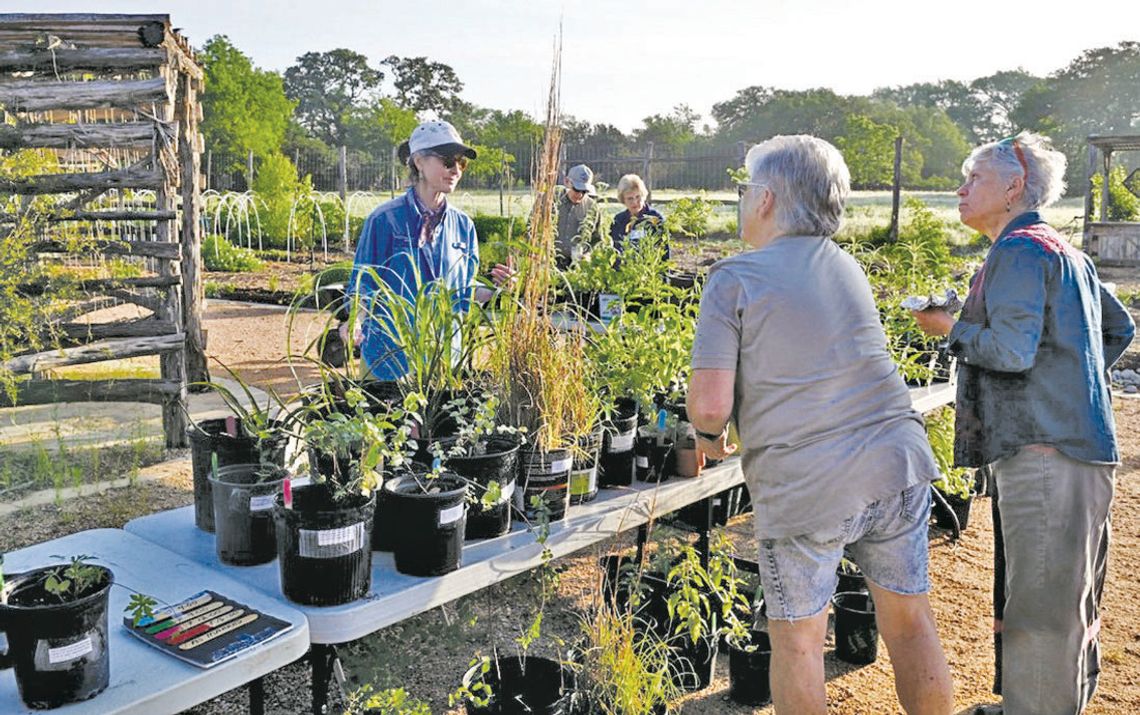CIBOLO CENTER FOR CONSERVATION
Pollinator gardens have become a crucial step toward restoring and supporting local ecosystems. Most often, native wildflowers and perennial plants are emphasized for their ability to attract bees, butterflies and other pollinators.
However, trees also play a vital, underappreciated role in these ecosystems. Trees provide food, shelter and breeding habitats for an array of pollinators and birds, creating a robust ecological web.
In South Central Texas, a region rich in biodiversity, native trees are particularly beneficial and come with a bonus: They are tough, able to withstand the heat, drought and hard freezes that come their way.
Here are 10 small to medium- sized native trees that support our Hill Country ecosystem’s pollinators and birds.
1. Red Mulberry (Morus rubra) This drought tolerant tree produces an abundance of red-to-black berries that attract birds, butterflies and mammals. It is the larval host plant for Mourning Cloak butterflies.
2. Anacacho Orchid (Bauhinia lunarioides) This small, understory tree needs protection from winter winds. It should be planted on the south side of buildings in a full sun or part-shade location. It produces showy white flowers that attract butterflies and bees.
3. Texas Redbud (Cercis canadensis var. texensis)
This vibrant spring bloomer supports early pollinators with its showy pink flowers, which attract bees and butterflies. Its canopy provides shade and shelter for nesting birds, while its seeds are eaten by various bird species. Tolerant of cold, heat and drought.
4. Mexican Buckeye (Ungnadia speciosa)
Mexican buckeye’s bright pink flowers attract bees and butterflies, especially in spring. Birds feed on its seed pods, and its branches provide habitat for nesting birds and insects. Adaptable to most sites and soils. Fast growth rate and drought-resistant.
5. Goldenball Leadtree (Leucaena retusa)
The bright yellow ballshaped flowers appear after rains, spring through summer, attracting bees and butterflies. This attractive, small tree has cinnamon-colored bark and airy foliage that casts light shade.
6. Anacua (Ehretia anacua) This fast-growing, small, evergreen tree produces white flowers that attract bees and butterflies. Its orange berries are consumed by many bird species, and the dense foliage offers refuge for nesting and resting.
7. Kidneywood (Eysenhardtia texana) This showy, multi-trunked shrub has fragrant white flower spikes loved by bees and butterflies. The foliage has a pungent, citrusy smell. It’s a larval host plant for dogface butterflies. Readily grazed by deer. Very drought tolerant.
8. Wafer Ash (Hop Tree) (Ptelea trifoliata)
This small tree prefers partshade or shade locations. Its citrus-scented flowers are inconspicuous, but they are followed by showy clusters of wafer seeds that persist most of the winter. This is the larval host plant for easter tiger and giant swallowtail butterflies.
9. Rusty Blackhaw Viburnum (Viburnum rufidulum)
This small deciduous tree prefers sun to part-shade and works well as an understory tree. The glossy, dark-green leaves turn bronzy hues in the fall.
Pretty, white flower clusters in spring are followed by fleshy, blue-black fruits that attract thrushes, flickers, and tanagers. Bees and butterflies, such as Spring Azure, are drawn to the flower nectar.
10. Eve’s Necklace (Styphnolobium affine)
Eve’s necklace is a small, attractive tree that attracts fuzzy bumblebees to its fragrant pink and white flowers in the springtime. The black seed pods look like strings of black beads, hence the name. Birds and nectar insects favor this tree.
Tips for planting trees
Buy smart. Choose trees from reputable nurseries using the scientific name to ensure correct species. October and November are ideal for planting. Use cages to shield saplings from deer.
Native trees need regular watering until fully established, even if drought tolerant.
For species details like size and planting needs, visit npsot.org.








Comment
Comments